Looking for a new plant that has a unique look to it? Check out the Alocasia Maharani! I picked up my first Alocasia Maharani a few years ago and fell in love with it. This beautiful plan has leathery looking leaves that just beg to be touched.
The Alocasia Maharani is easier to care for than other types of alocasia. It is one of the most unique of the alocasias, but also very popular because it is so much easier to care for than some of its finicky relatives!
Table of Contents
Alocasia Maharani Care Guide
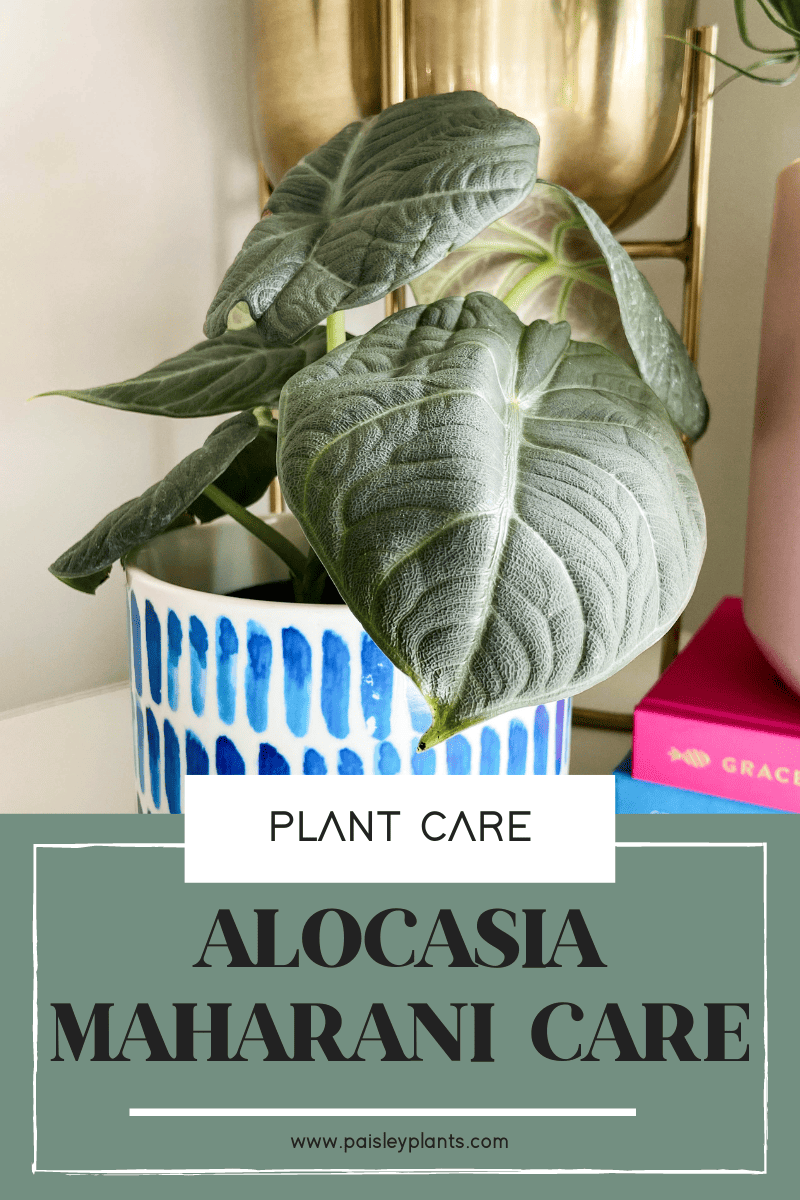
It has become very popular as a houseplant because of its easy care and its eye-catching appearance. Known for its gray-green highly textured foliage, the Maharani is considered a jewel alocasia native to the tropical rainforests of Southeast Asia.
The term “jewel alocasia” is a common term for alocasia plants that are known for their small compact growth and unique foliage. Other types of alocasias also considered to be jewel alocasias are the Alocasia Dragon Scale, Alocasia Silver Dragon, Alocasia Cuprea, and Alocasia Black Velvet.
A couple other common names for this plant are the Alocasia Grey Dragon and the African mask Maharani. This rare Alocasia can be difficult to find, but well worth the effort!
Toxicity
Pet owners should be aware that Alocasia Maharani is toxic to cats and dogs. It is also toxic to humans, so should be kept away from small children. This plant contains calcium oxalate crystals, which if ingested, can cause severe symptoms in humans.
Alocasia Maharani Care Guide
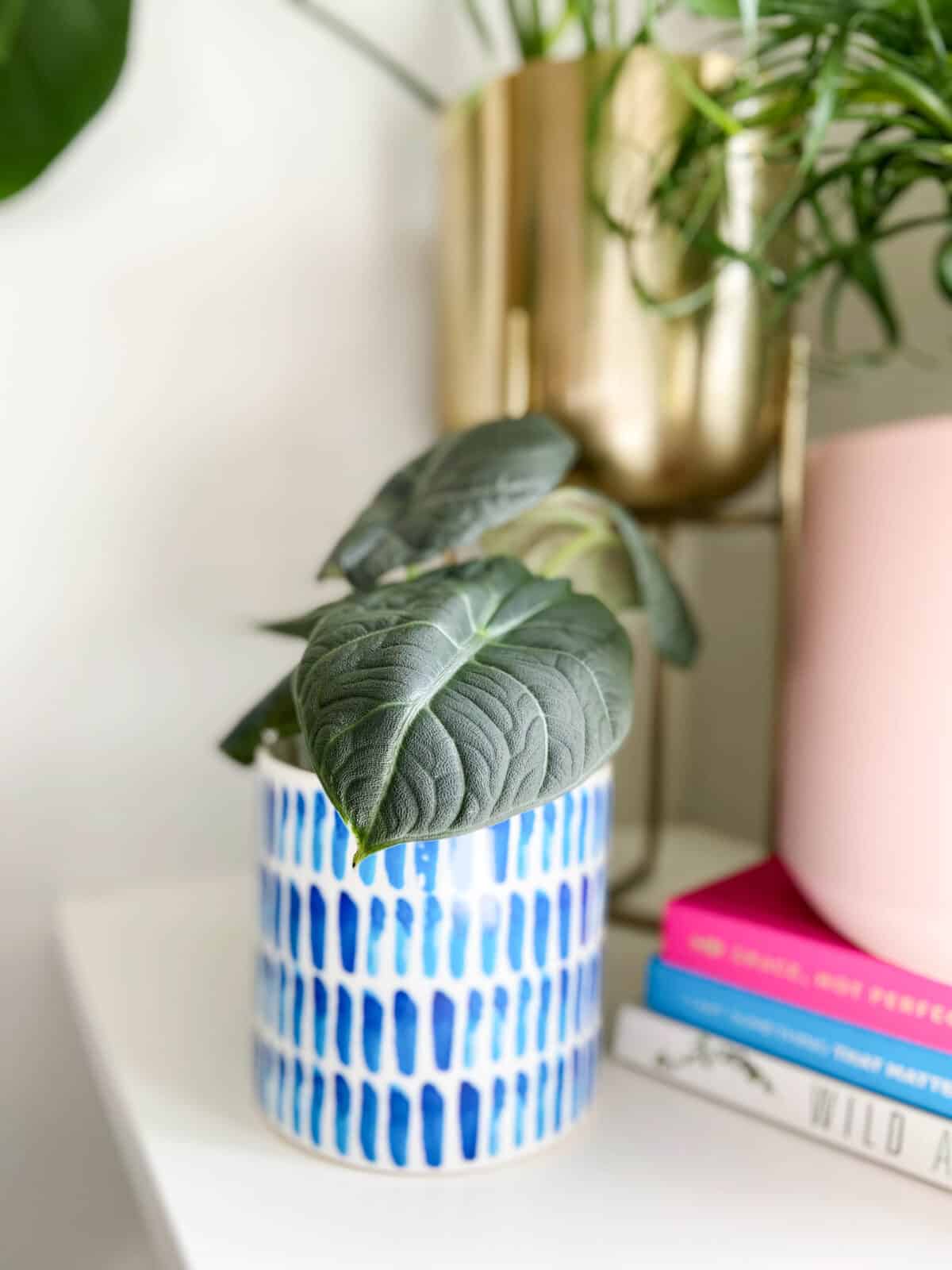
This post includes affiliate links.
Watering
The most important thing to remember about the Maharani is that when it comes to its care, it needs consistent moisture to survive indoors. This is not a houseplant that you can forget to water for a few weeks at a time!
Depending on the season, the watering needs may change. You should water your plant once or twice a week in the warmer months and you can cut back on the watering during the fall and winter when the plant is dormant and requires less moisture.
I found that once a week was too much for my plant. Every other week worked much better and helped prevent gnats from gathering!
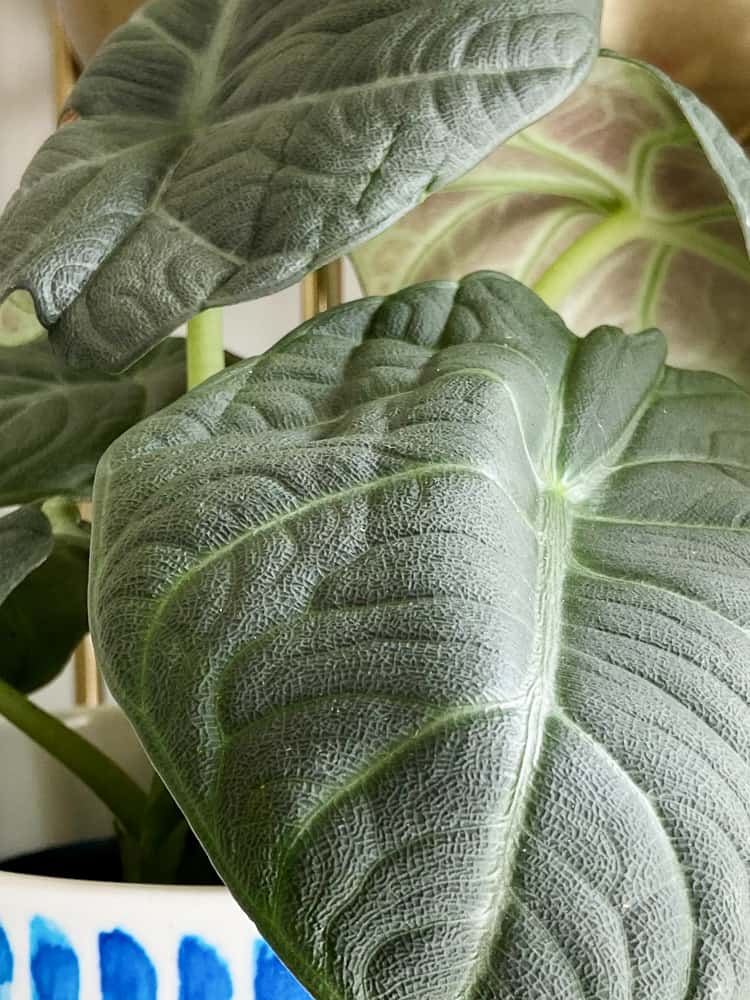
Light
The Maharani does best when grown in several hours a day of bright indirect light. This can be done with either natural sunlight or with grow lights if you don’t have sufficient lighting in your home.
Always avoid direct sunlight where possible, especially in the afternoon as this can burn the leaves of the Maharani. The leaves tend to be delicate and will easily burn if exposed to harsh, direct sunlight.
I have my plant on a shelf near a south facing window. I have it just out of reach of the sun so leaves don’t get burned and she seems to be really happy!
Soil
You should use an airy, rich and well draining soil mix for your Maharani. Mixing together regular well-draining soil mix, perlite, and orchid bark makes an ideal medium for these plants!
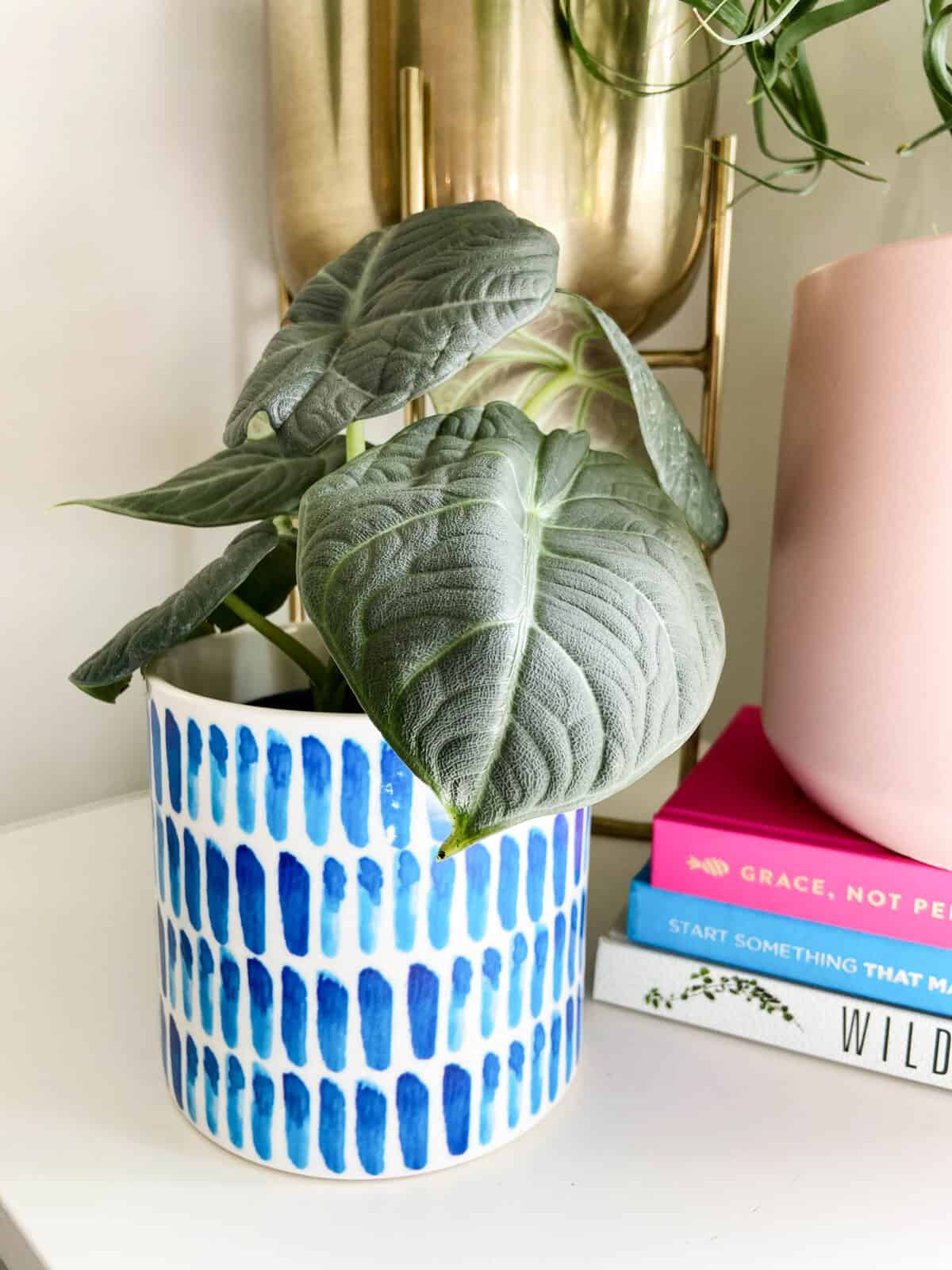
Fertilizer
While fertilizing isn’t necessary for your Maharani, it will help encourage vigorous growth if you do it during the active growing season. They do tend to be heavy feeders, so if you fertilize your plant, it will definitely help it grow to its fullest capacity.
How much you fertilize will depend on the size of your plant. Smaller plants need less fertilizer, larger plants need more fertilizer.
Use a balanced liquid fertilizer diluted to half-strength once a month in early spring through the summer months and stop during the winter months.
Temperature and Humidity
The best place for your Maharani to grow is in a warm, humid room. Most homes don’t have this feature, but if you put your plant in a bathroom or a kitchen, it may get added humidity. Being native to Southeast Asia, it is used to being grown in these types of conditions.
Most households have average humidity levels where your Maharani will survive, but if you want it to thrive, try to get in a spot with high humidity. You can always get a small humidifier to use indoors near your plant. If you do choose to move your Maharani outdoors, be sure it is not exposed to temperatures below 59 degrees F when possible. They prefer warmer temperatures with an ideal temperature range between 59-80 degrees F. Basically your average home environment will do just fine!
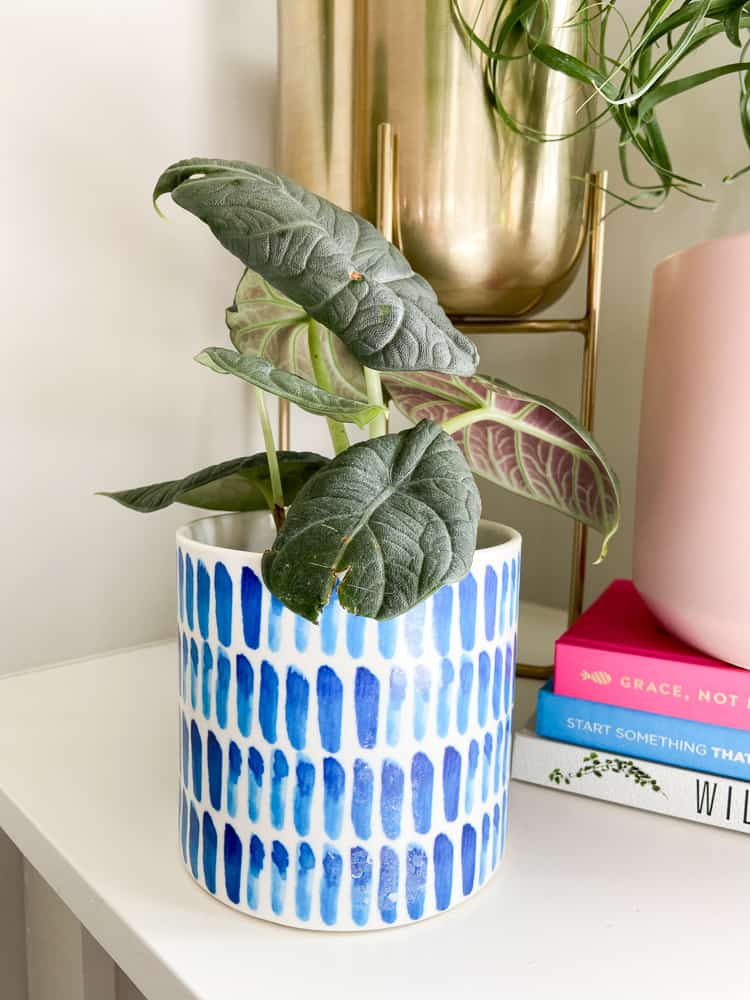
Pests and Fungal Diseases
These plants are not susceptible to any particular pests, but keep an eye out for any signs of pests like spider mites, fungus gnats, mealy bugs and thrips, which are all common houseplant pests.
Spider mites will always find a plant when it is in stress, so keep an eye on your Maharani to ensure these little critters don’t bother it. If they do, using an antibacterial soap on them should solve the problem.
The best way to kill this plant is by overwatering! The Maharani is susceptible to root rot, however, so you need to ensure that your plant does not sit in water for any prolonged period of time. They do not like wet feet and you need to be sure you have a well draining soil and pot with at least one drainage hole for this reason.

Pruning
Probably the only time you need to prune this type of plant is if the leaves begin to turn yellow. This is a sign of overwatering, so you should be careful to not overwater and be sure that excess water drains out of the pot!
If the leaves begin to turn brown, this is usually a sign that the plant needs more humidity. You always need to remember the origins of this plant and keep them moist to keep them happy!
In the event you notice leggy growth on your plant, it is most likely because the plant is seeking out more light. Unfortunately, there is no way to reverse the leggy growth that has already happened, but you can prevent it. Be sure to provide enough light and also rotate your plant regularly to prevent lopsided growth.
Repotting
For the most part, you won’t need to repot your Maharani very often. It should be fine in the same pot for a couple of years. Once the roots begin to grow out the drainage holes in the bottom of the pot, then it is time to repot the plant to a larger pot. You also may need to repot baby plants if you see them shooting off from the mother plant. This will happen about once a year on really happy plants. (I have yet to have that happen on mine!)
It is recommended that you choose a pot that is one to two inches larger than the current pot. If you put it in a pot that is too much larger, you may tend to overwater your plant, which is not a good thing!
When repotting, shake the roots to release any of the old soil, then use fresh soil in the bottom of your new pot. Pat the soil down around the roots to keep the plant stable. Water it well after repotting, but be sure it drains well also so it is not sitting in wet soil.
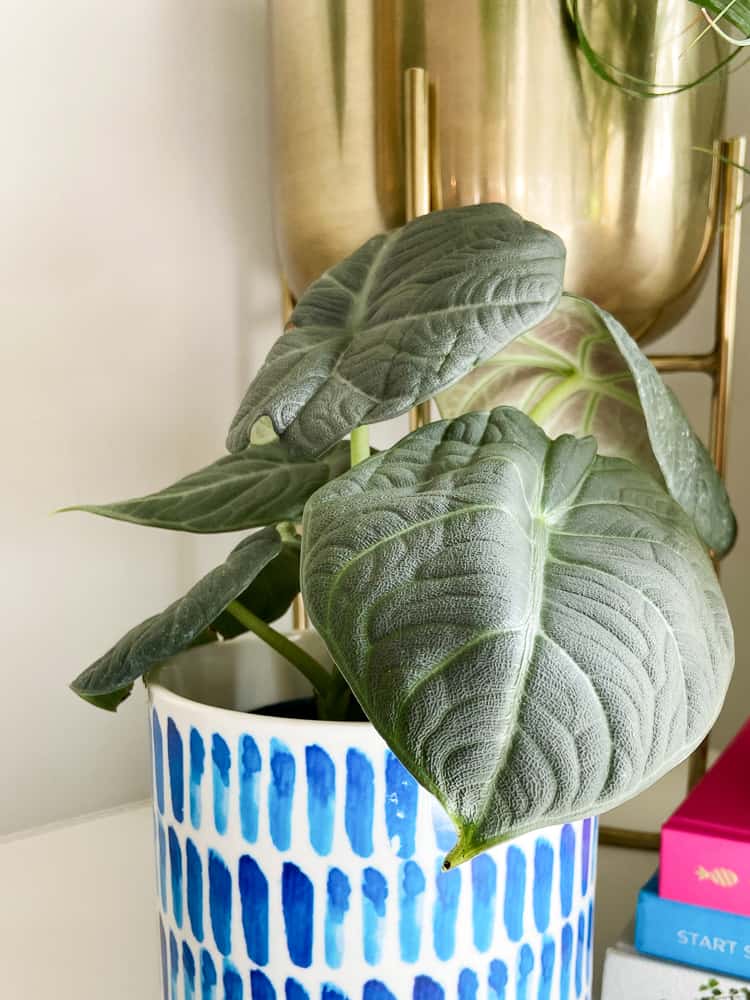
Common Problems of the Maharani
The most common problems that Maharani have are yellow leaves, crispy brown leaves, drooping leaves, leggy appearance, and pest infestation.
Yellow leaves are most commonly from overwatering your plant. This is easy to control if you keep the watering at a moderate level. Crispy brown leaves can occur when you underwater your plant. Keeping to a consistent watering schedule will help your plants’ leaves thrive and not turn yellow or brown.
Yellow or brown spots could be from using tap water to water your plant. To fix this you can either leave your water out to neutralize for 24 hours or use distilled water.
Drooping leaves indicate either too much water, not enough light, or pest infestation. The lack of food and essential nutrients makes your plant droopy and weak.
Where to Buy
FAQs
When your plant does not get enough light it will stretch toward a near light source. Move your plant closer to a consistent light source and this should solve the problem. Also rotate your plant regularly to help keep this from happening!
You will not be able to do anything about the leggy portion of the plant, but the future growth will even out if you keep it in a place with consistent light.
You should let your Maharani almost dry out, but not totally. Keep a regular watering schedule to maintain consistent moisture in your plant. It should never be left to sit in water as this can cause root rot.
Yes, Maharanis do flower, but not usually when grown as houseplants. They need optimal conditions to bloom indoors, so if this does happen, you have a very happy plant!
In Conclusion
You are going to want to keep in mind that this plant is native to the tropical rainforest, so it needs to be grown in similar conditions when you grow it as a houseplant.
This means keeping the temperature above 70 degrees F at all times, keeping it in a humid environment (preferably around 80%), and giving it sufficient light. When growing indoors, remember that you have control over the environment your plant grows in!
Check out other Alocasia plants here!
